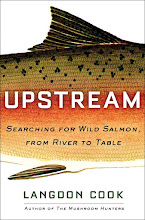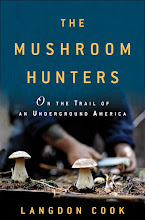 The hunting memoir is becoming a regular feature of the spring and fall publishing seasons—even as the number of hunters in the U.S. continues to decline as a percentage of the population.
The hunting memoir is becoming a regular feature of the spring and fall publishing seasons—even as the number of hunters in the U.S. continues to decline as a percentage of the population.This counter-intuitive development might be explained by the trendiness in all-things-foodie. Or it might say something about the changing demographic of today's hunters, who are looking for something more than just a how-to guide. Many of these new hunters haven't had the benefit of a mentor—a father or uncle to initiate them into what was once, generations ago, a rite of passage for nearly all American boys—and a growing number of these hunters are urban or female. The hunting memoir helps to fill this void. It's a vicarious ride with a knowledgeable hunting buddy, with waypoints of instruction along the route.
Two new books this season offer such rides, with much more than how-to information. Lily Raff McCaulou's journey from New York professional to Oregon hunter in The Call of the Mild will resonate with many readers, female or male, who are trying to reconnect with the natural world, whether via hunting or other outdoor pursuits. Steven Rinella's Meat Eater is a different sort of book, and while it dispenses all kinds of wisdom for would-be hunters, the pleasure is mostly in the telling, like listening to an old-timer spin yarns by the fire. (That Rinella is still in his thirties makes it all the more surprising.)
For McCaulou, a cross-country move to a new job as a reporter in Bend, Oregon, and a boyfriend (later husband) with a flyrod are the blood sport catalysts. He takes her fishing on Oregon's famed Deschutes River. She then takes it a few steps farther, picking up a firearm and learning how to hunt game birds and, eventually, larger, hoofed quarry. Like Georgia Pellegrini in Girl Hunter, McCaulou faces challenges specific to her gender.
But mainly her decision to hunt is more personal, with an added dose of food politics. She quotes what are now familiar statistics to anyone paying attention: According to the United Nations, 30 percent of the earth's land surface is used to raise meat (including the growing of grains for feed); 18 percent of greenhouse emissions are caused by the meat industry; the average American eats 241 pounds of meat per year. And yet, despite all that meat eating, we are more distanced than ever from the processes that make such a diet possible.
As a lifelong meat eater, I feel a responsibility to see for myself that uncomfortable thing that has always been at the heart of a human diet, since long before animals were domesticated and their upbringing industrialized: death.It turns out that facing death in its many guises is at the core of McCaulou's memoir, and this stubborn fact of life is explored in some unexpected ways. Not so unexpectedly, the book culminates with a big game hunt, though the patience and detail with which it's recounted will be appreciated by neophyte hunters wondering what this moment of truth might be like.
***
Rinella's childhood, as revealed in Meat Eater, will be envied by many readers. One of three brothers, all close in age, he grew up in rural Michigan and had the run of a landscape that included woods, lakes, and semi-abandoned summer camps. There is a theme of resourcefulness throughout the book that, sadly, will strike many as anachronistic. Much of the pleasure in reading these hunting stories is contained in the process: the detailed descriptions of building a tree sit or breaking down an animal.
Rinella is an amiable narrator, with an easy-going voice and an eye for the telling detail. One of the things I like about his writing is what I call the moment of stunning weirdness—the image, turn of phrase, or even entire scene that takes you utterly by surprise. These moments are part of the enjoyment of reading. They grab you by the scruff of your neck and make you take notice. I'm thinking of a scene in Meat Eater when Rinella recollects his fondness—or maybe fascination is a better word—for muskrats. He describes their denning habits and then mentions that a bunch of them denned in an old float anchored in his family's pond. One of Rinella's tricks, he remembers, was to swim stealthily out to the float and ambush the muskrats, scattering them out into the open water. Then he'd "dive in after them and see how far I could chase them underwater before I had to come up for air."
This is a detail that tells us exactly what sort of kid Rinella was. In a few sentences he captures the mood of a rural childhood, with both the nascent hunter emerging and also the innocent curiosity-bordering-on-cruelty of youth. It's also the way he disarms the reader, so that past delinquencies that he owns up to (illegal trapping, fishing for spawning steelhead over their redds) can be written off as callow mistakes.
One of my favorite chapters is about fishing rather than hunting, and though I disagree with it's inferred conclusion (that catch-and-release fishing is, in a word, stupid), the progression from steelheading in the Great Lakes to fly-fishing for bonefish during a nomadic, dirtbag month down in the Yucatan is a tour de force of good angling writing (i.e., we're treated to characters and their motivations rather than the mind-numbing repetition of "screaming reels").
What both of these books show is that, no matter what the numbers say about the popularity of hunting in our increasingly indoors-oriented society, words still matter—and the hunting memoir remains a vital part of our literary bookshelf.



















